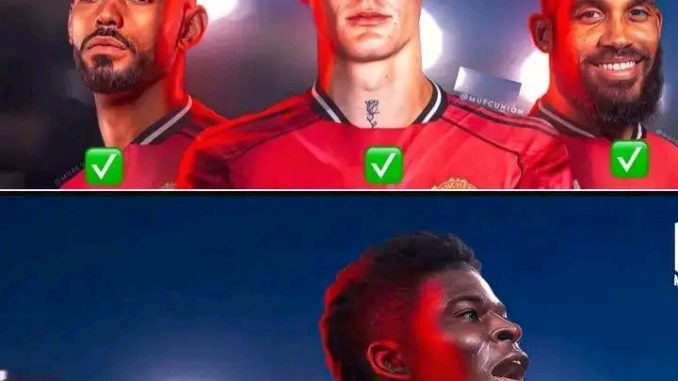
Rúben Amorim’s decision to implement his favored 3-4-3 formation at Manchester United could.
mark a significant tactical shift, especially with a front line of Matheus Cunha, Bryan Mbeumo, and Benjamin Šeško.
This trio promises a blend of pace, intelligent movement, and technical quality capable of unsettling even the most organized defenses. Cunha’s dribbling and ability to drop deep to link play, Mbeumo’s sharp runs and creativity from wide areas, and Šeško’s aerial presence and finishing instinct could give United a multi-dimensional attack that is both unpredictable and dangerous.
However, the success of such an attacking setup hinges heavily on the midfield’s ability to control the game and feed the forwards effectively. In a double pivot, Amorim will need at least one midfielder who is comfortable receiving the ball under pressure, turning in tight spaces, and progressing play between the lines. This is where a player like Carlos Baleba becomes invaluable. Known for his composure on the ball, intelligent positioning, and ability to carry possession forward, Baleba could act as the crucial link between defense and attack. Unlike midfielders who panic when pressed, he thrives in tight situations, helping to maintain rhythm in build-up play and dictate the tempo from deep.
The back three in this system will also play a major role in maintaining defensive stability while providing outlets for progression. Wing-backs will need to be dynamic, offering both width in attack and cover in defense. The balance between defensive solidity and attacking ambition will determine how well this system works in the Premier League.
Ultimately, Amorim’s 3-4-3 could unlock a new level of creativity and fluidity for Manchester United. If the players adapt quickly to his principles — and if Baleba is brought in to anchor the midfield — the team could become far more dangerous, both in controlled possession and in explosive transitions.
Leave a Reply